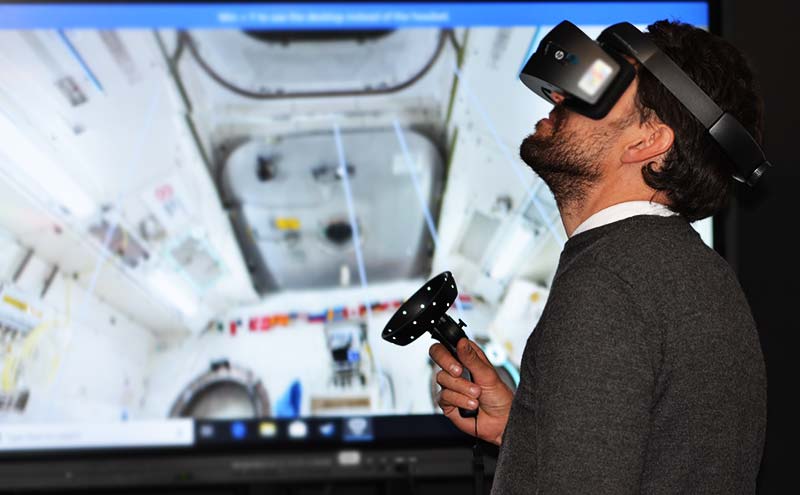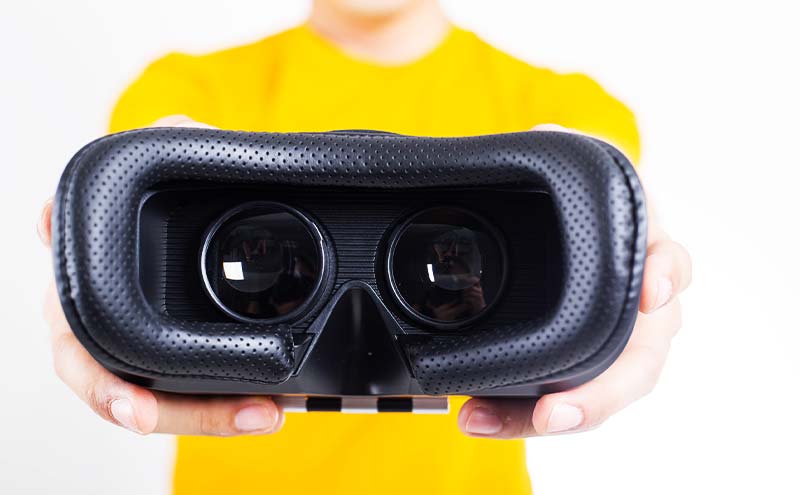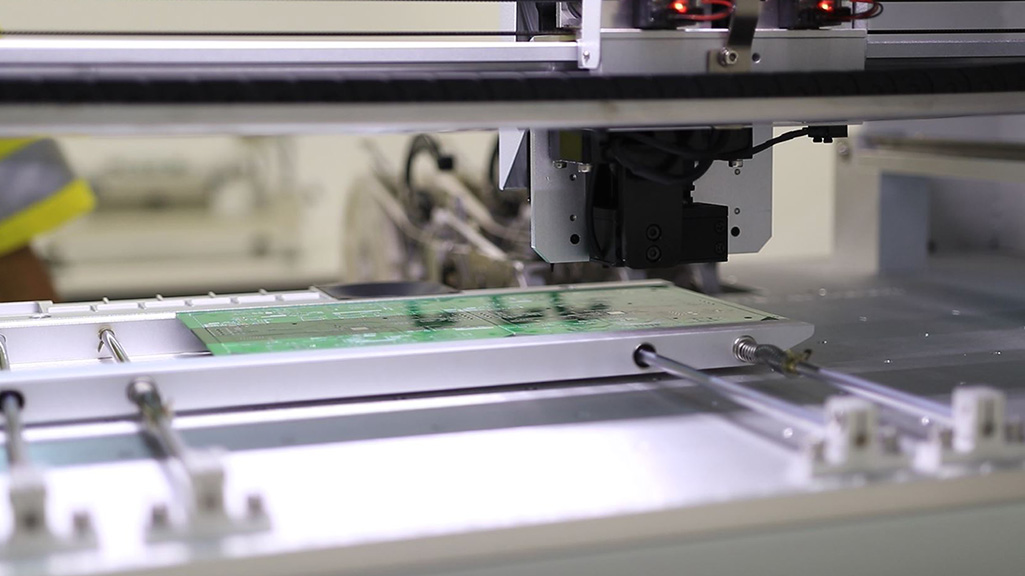Virtual Reality, Today
After a steady development throughout the twentieth-century, Virtual Reality (VR) has exploded in popularity. Quickly developing from a niche technology to now being considered a novelty by the general public and a widely applicable and available tool utilised by businesses and consumers alike.
VR headsets are revolutionising traditional business practices. VR is enabling businesses to communicate ideas
and products to prospective customers with a degree of fidelity once only dreamed of, as well as speed up design and production cycles at a lower cost.
While games remain the key driver for the industry with just under 60% of projects being developed in this field, a growing interest in education and training has seen the VR space become less profitable.
The shift in design from tethered to a standalone headset and the capability to use a personal smartphone have been key drivers in its development.
More companies are investing in the development of VR consumables. While delays in Facebook has proposed the launch of ‘Oculus for Business’, resulting in many people questioning their intentions, the fact the company is delving into the corporate aspect supports the ongoing growth of this sector of the industry.
Virtual Reality to Improve Safety
The Future of Safety with Virtual Reality
Mining and underground construction continue to be considered some of the most dangerous jobs in the world. Still, the use of virtual reality could serve as a new tool to improve aspects of safety training provided to personnel. With realistic and affordable virtual reality training, staff could learn to recognise hazards and develop strategies for safe evacuation procedures without exposing themselves to the real dangers encountered in a mine. A carefully tailored virtual reality scenario could help organisations develop strategies that fit their specific location and team.
Using Virtual Reality in Hazardous Situations
The introduction of immersive reality in a hazardous scenario could help alleviate the stress and mood changes caused by the situation. Simulating events that could prevent panic or help workers safely commence emergency response procedures. In the workplace, the use of VR is beneficial to staff and management. Personnel across all levels can familiarise themselves with safety protocols, emergency response plans, and their roles.
Virtual reality is not expected to replace field training; however, it can enhance current practices. Recreating hazardous situations in a virtual realm offers the organisation the ability to increase the frequency of training, which in turn can reduce the stress associated with emergencies by improving the understanding of procedures.
How Virtual Reality is Modernising Business
Education and Training
VR has the potential to change how we educate people, and the applications are limitless. From learning a new language to assembling a jet engine, if it can exist, then it can be taught through VR.
Virtual field trips to distant locations are already being undertaken in school classrooms all over the world, inspiring a new generation of students while allowing them to get closer to what they’re studying than would be conventionally possible.
In the business sense, VR gives an employer the ability to train employees across endless fields – including maintenance, assembly, and the theory of products. These products can be both in the production phase as well as prototyping. Initial training in a VR setting can provide a base understanding and confidence, fast-tracking the next phase of training in real life.
VR also provides a cost-effective platform for smaller, more niche projects where businesses, government bodies, and NFP’s are creating an internally focused experience.
Safety training, an effective and secure way to train individuals and groups in H&S protocols, exposes them to different environments, is convenient and just as importantly – inexpensive.

Transference of Skills through Product Development
VR has changed the product development process by allowing designers to create concepts that are tangible. With a more precise, visual model, designers can provide clients with an accurate depiction of the product before manufacturing. Virtual reality can improve the overall quality of the product, as well as reduce development costs and pre-production design updates.
VR for Engineering
For Engineers, VR provides the ability to walk around and inspect their current project and gain a perspective usually restricted to the prototyping phase. It allows them to consult with experts from other fields early in the design process as well as providing a powerful tool when pitching a design to prospective clients.
VR Improves Production
The applications of VR don’t stop after the design and prototyping phase is completed. Once a product is ready for manufacture, VR can be utilised to upskill production personnel, reducing the time taken to reach full production capacity. This same method can be used for inducting new personnel into the environment they are likely to be working in.
As VR technology continues to improve and become more accessible to businesses, more companies will be keen to incorporate virtual reality into their business development efforts. The immersive reality technology will provide learners and users with a unique experience that will improve knowledge retention, situational response, and products design and marketing.






